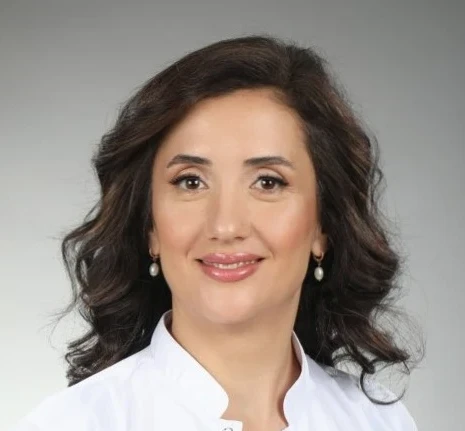Over time, certain areas of our face may experience volume loss and wrinkles. Particularly, the forehead and temple areas tend to become thinner, flatter, and hollow as we age. This condition may create a harsh expression and cause facial contours to appear unbalanced. Forehead and temple fillers are non-surgical procedures designed to restore lost volume in these areas, providing a younger, balanced, and aesthetically pleasing appearance. Let's explore all the essential details about forehead and temple fillers!
What are Forehead and Temple Fillers?
Forehead and temple fillers are aesthetic procedures performed using hyaluronic acid or other filler substances. They aim to smooth wrinkles on the forehead, restore lost volume in the temples, and achieve a more balanced facial appearance.
- Forehead filler reduces deep horizontal wrinkles, making the forehead smoother.
- Temple filler restores volume to hollow areas, making the face look more youthful.
These treatments offer quick and effective solutions without the need for surgical intervention.
Who is Suitable for Forehead and Temple Fillers?
This procedure is suitable for anyone seeking to minimize signs of aging and improve facial harmony. It is especially beneficial for those:
- With noticeable forehead wrinkles.
- Experiencing hollowing or volume loss in the temples.
- Wanting a younger, fuller facial contour.
- Seeking to prevent drooping eyebrows.
- Looking for a non-surgical facial rejuvenation method.
- Those who want to combine fillers with other rejuvenation treatments such as Botox.
Advantages of Forehead and Temple Fillers
- Non-surgical and Quick Procedure: Completed in a short time without a recovery period.
- Natural and Balanced Results: Offers a youthful, harmonious facial appearance.
- Eyebrow Lift Effect: Temple filler can subtly lift the eyebrows.
- Hydrates and Revitalizes Skin: Hyaluronic acid fillers nourish and refresh the skin for a healthier look.
- Long-lasting Results: Effects typically last 12-18 months depending on the filler material used.
Are Forehead and Temple Fillers Permanent?
Forehead and temple fillers are not permanent, but their effects last a long time. Hyaluronic acid-based fillers generally last for about 12-18 months. Since fillers gradually dissolve in the body, repeat treatments may be scheduled to maintain desired results.
Aftercare for Forehead and Temple Fillers
For optimal results after filler treatments, consider the following:
- Avoid Makeup for the First 24 Hours: Prevent infection by refraining from applying cosmetics on injection sites.
- Avoid Applying Pressure: To ensure even distribution of filler, avoid pressing or rubbing your face for the first few days.
- Stay Away from Extreme Heat and Cold: Avoid environments such as saunas, steam rooms, and hot showers.
- Stay Hydrated: Hyaluronic acid retains water; therefore, drinking adequate water supports filler longevity.
- Avoid Alcohol and Blood Thinners: Abstain from alcohol and blood-thinning medications for at least 48 hours post-procedure.
- Use Cold Compresses for Swelling: Intermittent cold compress application during the first 24 hours can minimize swelling.
Possible Side Effects of Forehead and Temple Fillers
Forehead and temple fillers are generally safe, but mild side effects may occur:
- Mild Swelling and Redness: Usually resolves within a few days after treatment.
- Temporary Sensitivity: Slight tenderness at the injection sites.
- Bruising: Rare, but typically disappears quickly.
These effects are generally short-term and pose minimal risk when applied correctly.









